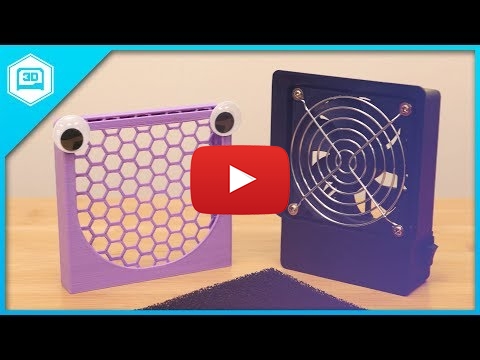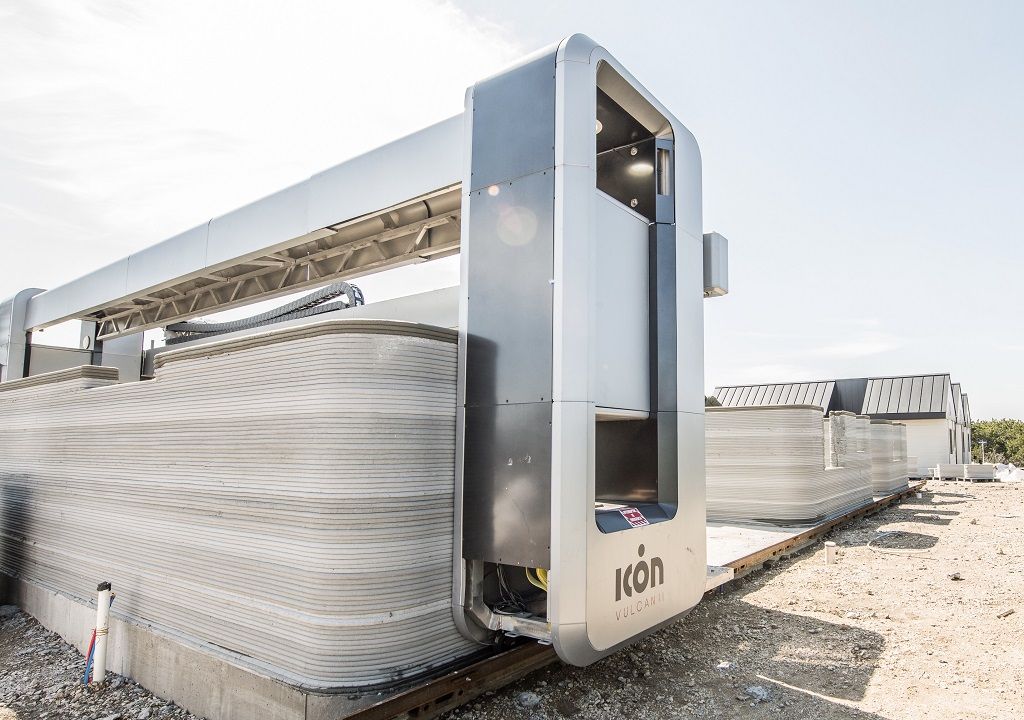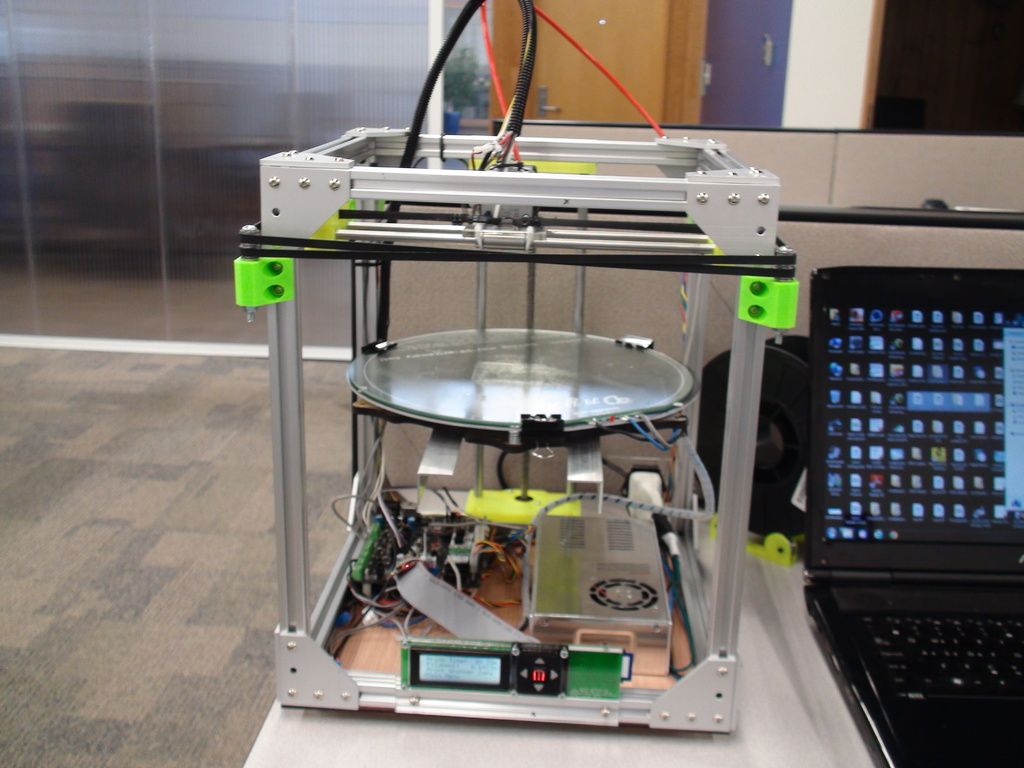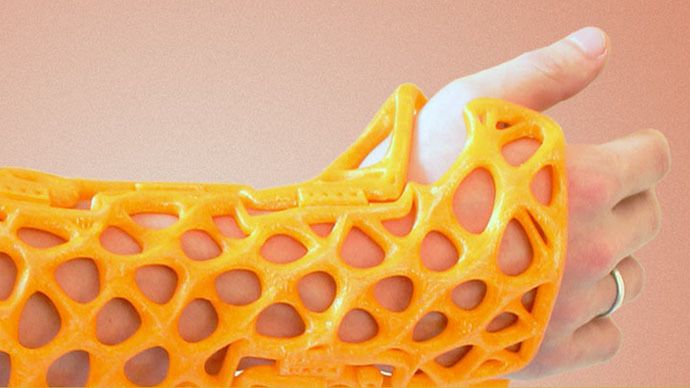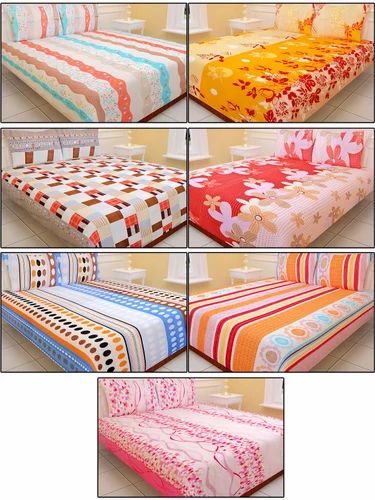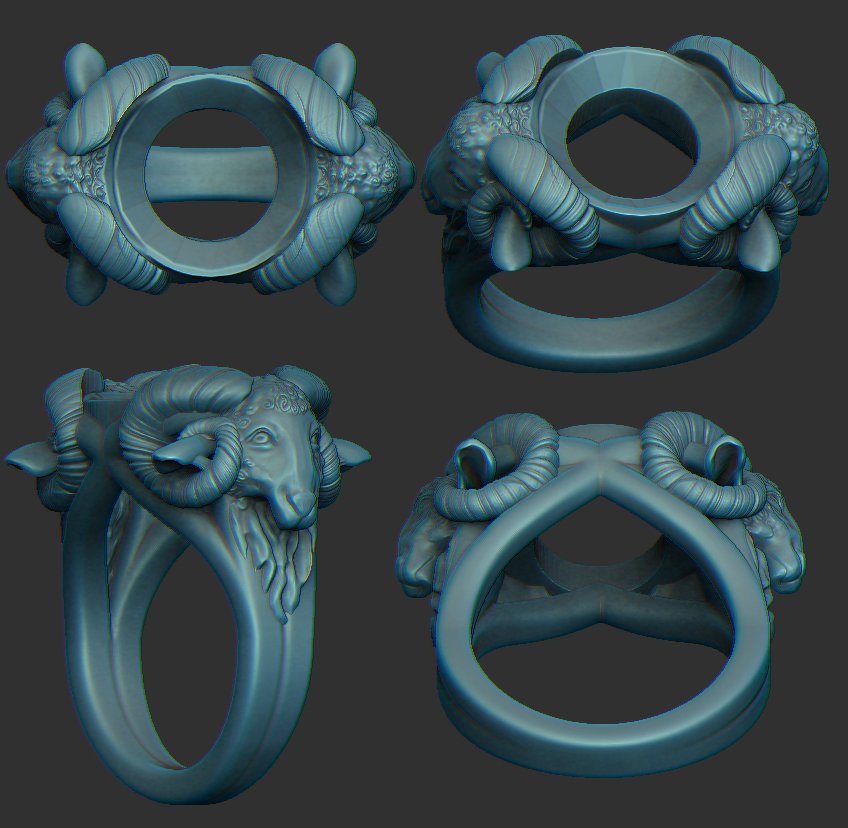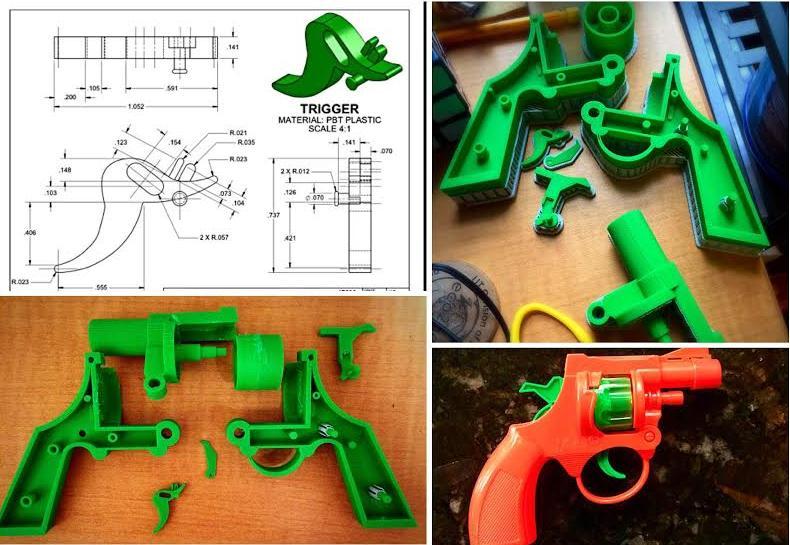3D printers for jewelry design
Printing with Metals, Plastics, and Castable Resins
Rapid development of additive manufacturing leads to considerable changes in a lot of industries. Some of them use 3D technologies at all the stages of production, starting with 3D scanning and then employing 3D printing for prototyping or end-use parts production. Jewelry is one of the fields where digital technologies have only started their expansion, often being a bridge to traditional methods.
Credit: n-e-r-v-o-u-s.com
Digital revolution in jewelry
The craft of jewelry is as old as time, and it has always involved a lot of skill and time spent on every single item creation. Besides, there are always limitations to human possibilities — however skillful a craftsman was, some most intricate design concepts could only exist in their imagination.
Credit: Pinterest
With 3D printing development, more and more people in the jewelry industry are discovering the opportunities it provides both from the artistic and business perspective.
The traditional method of jewelry manufacturing implies lost-wax casting. Casting patterns creation is an expensive and time-consuming part of the process, and this is where 3D printing can be of great help, becoming a bridge to conventional manufacturing. What’s so good about using digital technologies in such a traditional field? Let’s see.
Credit: fastcastings.com
Why 3D print jewelry
Complete design freedom
As mentioned, there are certain design limitations in traditional production of casting patterns that are made either by hand or using CNC machines. With digital design opportunities and 3D printers capable of reproducing the digital models with extreme precision and accuracy, it’s now possible to create wax casting patterns of any complexity. The use of 3D printing has brought up new standards in the art of jewelry, allowing for the designs that could have never been realized before.
Credit: indiamart.com
Unlimited customization opportunities
Customization is of considerable importance in jewelry as customers often want to get one of a kind adornment.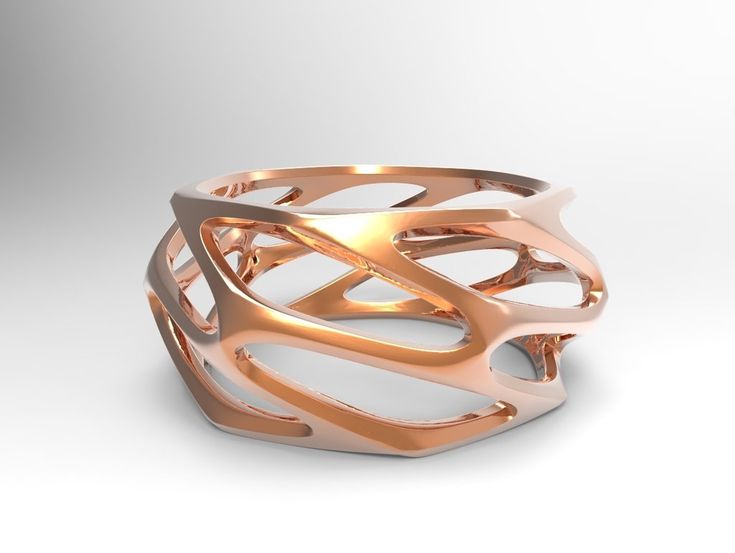 3D printing provides vast opportunities for custom products, either created from scratch, or by adjusting the already existing design according to the customer’s wish. The customization process doesn’t require additional costs and takes considerably less time and effort than in traditional production, where any changes made upon the product jacked up the price.
3D printing provides vast opportunities for custom products, either created from scratch, or by adjusting the already existing design according to the customer’s wish. The customization process doesn’t require additional costs and takes considerably less time and effort than in traditional production, where any changes made upon the product jacked up the price.
Credit: sculpteo.com
Faster prototyping
With 3D printing, customers have a try-on option to make sure the model fits perfectly and completely meets all their needs, before the final part is made. Printed resin prototypes are affordable and quick to make, they feature high quality and precision and can give the true-to-life impression of the future model.
Credit: additive-plus.com
Lower cost
Batch-manufacturing in jewelry 3D printing allows reducing the production costs, as a whole run of wax patterns can be printed in one go, thus saving material and shortening the production time; you can also print different designs at a time. All this makes jewelry manufacturing more cost-effective than ever before.
All this makes jewelry manufacturing more cost-effective than ever before.
Credit: hubs.com
3D Printing technologies in jewelry production
Basically, there are two ways of implementing additive manufacture into the jewelry business, namely direct and indirect 3D printing, the former being less common, at least for now.
Direct 3D printing
Direct 3D printing of jewelry implies using metal (SLM or DMLS-based) printers to build the final parts right from the digital models, created in CAD software. The parts can be printed with gold, silver, or platinum alloys or other metal powders. Such an approach completely excludes traditional techniques from the production cycle and turns it entirely digital.
Credit: Pinterest
Despite all the general advantages of 3D printing, discussed above, this particular method is not very popular as it is more expensive than investment casting, and the printed parts require significant post-processing. Besides, precious metals are very difficult to print as they are highly reflective and thermally conductive. So, there are few printers in the market that can work with them. Still, rapid progress in digital technologies can change the situation for the better.
Besides, precious metals are very difficult to print as they are highly reflective and thermally conductive. So, there are few printers in the market that can work with them. Still, rapid progress in digital technologies can change the situation for the better.
Indirect 3D printing
In this method, 3D printing is used to optimize the traditional lost-wax casting process to speed up the production and make it more flexible and cost-effective.
Credit: reddit.com
The jewelry 3D printing process
- First the design of the future piece is created using CAD software. The STL (or other compatible) file is imported to a 3D slicer and prepared for printing.
- The model is printed using castable wax materials to make a wax casting pattern. At this stage you may want to print a try-on part first to ensure the fit and design are just right.
- The liquid molding material is poured over the wax pattern and left to solidify.
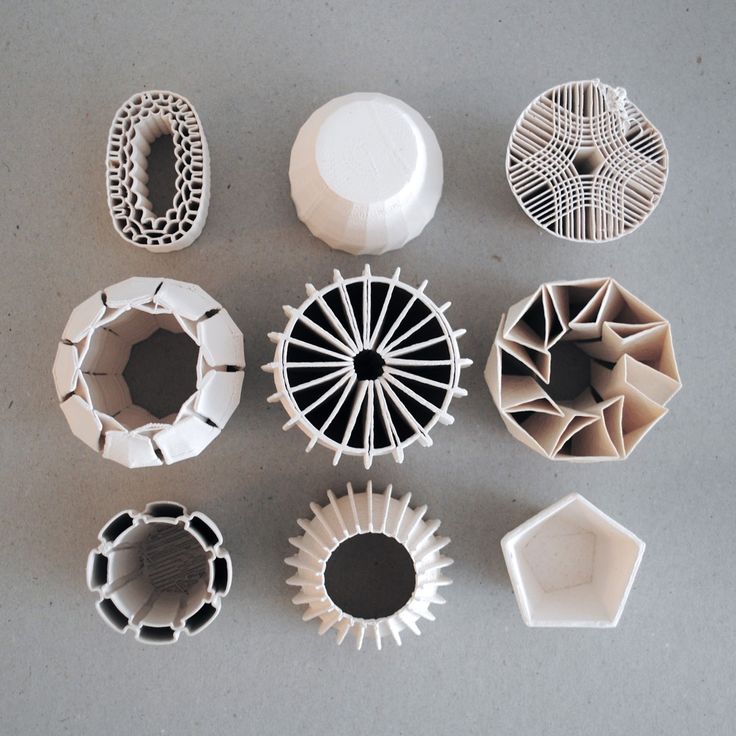 Thus a mold for the future part is created.
Thus a mold for the future part is created. - When the mold is hard, it is placed into a furnace to melt or burn out the wax pattern, forming a so-called negative mold.
- The final casting material, which is usually melted gold, silver, brass, or other metal, is poured into the mold and left to cool and solidify.
- The mold is removed and the final part is ready for post-processing.
What are 3D printers for jewelry?
For direct metal printing, SLM or DMLS printers are used. However, very few of them can work with precious metals alloys, so other metals, like steel or bronze, can also be used.
Some jewelers create their collections using SLS technology, printing unique modern jewelry pieces with nylon or polyamide.
Credit: dianalaw.com
3D printing of wax casting patterns requires exceptional precision and accuracy, as well as the use of appropriate wax-like materials that can be completely melted or burnt out afterwards. So, the best options possible here are resin or material jetting technologies.
So, the best options possible here are resin or material jetting technologies.
Now let’s see which printer models are the most suitable for jewelry manufacturing.
The best 3D printers for jewelry 2022
Flashforge WaxJet 400
The Flashforge WaxJet 400 is a professional 3D printer based on MJP (MultiJet Printing) technology. It prints wax casting patterns for investment casting and works with proprietary materials for parts and support structures printing. The device can print layers at the height of 16 microns with the printing resolution of 1200 x 1200 x 1600 dpi and the accuracy of ±0.04 mm / 20 mm, which provides accurate highly detailed models with smooth surface finish. The large build volume of 289 x 218 x 150 mm allows printing multiple models in one go and together with fast print speed makes for high productivity of the WaxJet 400.
Pros
- High print quality
- Extreme productivity
- Highly automated printing process
- Large build volume
Cons
- Can print with only proprietary materials
Phrozen Sonic 4K 2022
The Phrozen Sonic 4K 2022 is a large resin 3D printer designed for the dental industry, and it absolutely meets the requirements of jewelry production. It sports a monochrome LCD matrix with a resolution of 3840 x 2160 and a build volume of 135 x 75 x 200 mm. The optical system of the device has been improved compared to the previous models. The Phrozen Sonic 4K is equipped with a powerful ParaLED® 3.0 module which provides uniform light exposure and, consequently, uniform layer thickness over the entire area of the print. The minimum layer height of 10 microns ensures exceptional print quality. Phrozen offers a choice of castable resins that can be used with the Sonic 4K 2022 to print mold patterns for investment casting.
It sports a monochrome LCD matrix with a resolution of 3840 x 2160 and a build volume of 135 x 75 x 200 mm. The optical system of the device has been improved compared to the previous models. The Phrozen Sonic 4K is equipped with a powerful ParaLED® 3.0 module which provides uniform light exposure and, consequently, uniform layer thickness over the entire area of the print. The minimum layer height of 10 microns ensures exceptional print quality. Phrozen offers a choice of castable resins that can be used with the Sonic 4K 2022 to print mold patterns for investment casting.
Credit: @georgebulte / Instagram
Pros
- Fine precision and uniformity of the prints
- Fast print speed
- Wide choice of materials, including castable resins
- Wide connectivity options
Cons
- Rather small build volume
Anycubic Photon Mono X
The Anycubic Photon MonoX is a large-format resin 3D printer based on LCD technology.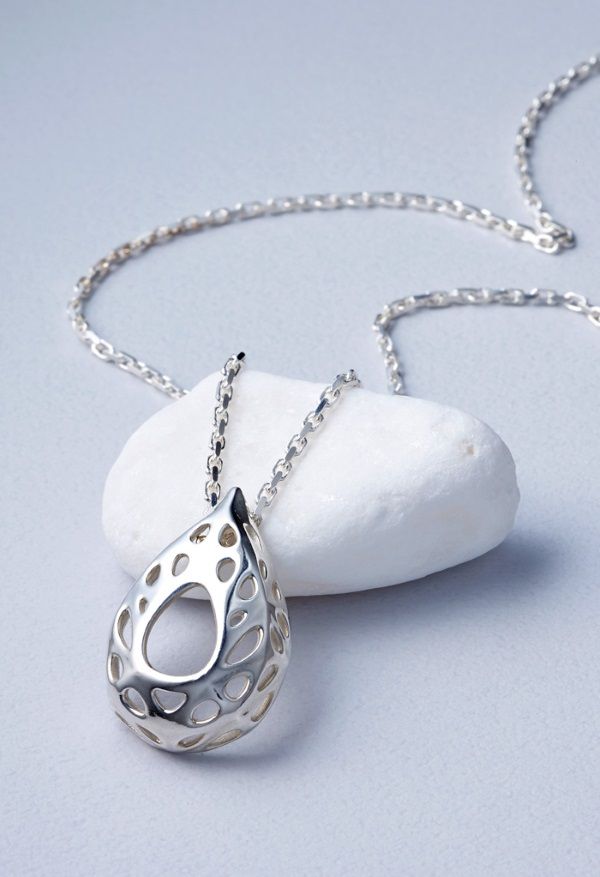 Uniform light exposure over the entire print area is provided by the 8.9" 4K LCD screen and a new parallel light source. The build volume of 192 x 120 x 245 mm and fast print speed stand for high productivity, while the 10-micron minimum layer height allows printing high quality casting patterns for jewelry manufacturing. For better performance and more convenient post-processing the Photon Mono X can be supplemented with the Anycubic Wash and Cure Machine 2.0.
Uniform light exposure over the entire print area is provided by the 8.9" 4K LCD screen and a new parallel light source. The build volume of 192 x 120 x 245 mm and fast print speed stand for high productivity, while the 10-micron minimum layer height allows printing high quality casting patterns for jewelry manufacturing. For better performance and more convenient post-processing the Photon Mono X can be supplemented with the Anycubic Wash and Cure Machine 2.0.
Pros
- Fast print speed
- Great print quality
- Large build volume
- Built-in safety functions
- Fast and easy set-up
Cons
- Print bed is difficult to clean
Original Prusa SL1S Speed
The Original Prusa SL1S Speed is an LCD-based resin 3D printer featuring a 5.96'' monochrome LCD screen with 2560 x 1620 resolution and a new optical system with a four times more powerful UV LED panel than the previous SL1 model.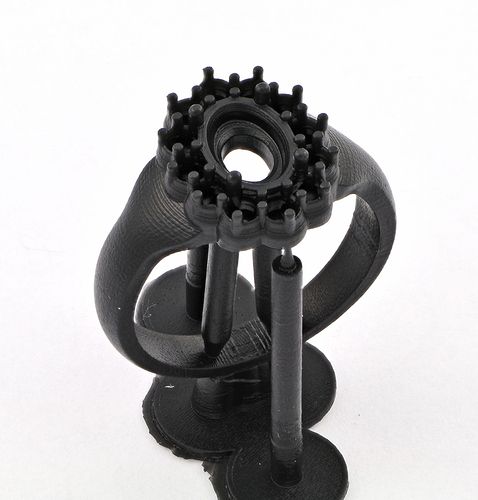 The print speed of the SL1S Speed is remarkably fast — the curing time for a single layer is just 1.4 seconds. Fast accurate printing and compatibility with different types of 405 nm UV resin make the Prusa SL1S a great option to use in jewelry for casting patterns production. The printer can be bought stand-alone or as part of a special bundle of the Original Prusa SL1S 3D printer and the Curing and Washing Machine.
The print speed of the SL1S Speed is remarkably fast — the curing time for a single layer is just 1.4 seconds. Fast accurate printing and compatibility with different types of 405 nm UV resin make the Prusa SL1S a great option to use in jewelry for casting patterns production. The printer can be bought stand-alone or as part of a special bundle of the Original Prusa SL1S 3D printer and the Curing and Washing Machine.
Pros
- Fast speed
- Excellent print quality
- Easy operation
- Compatible with third-party materials
Cons
- Rather small build volume
Farsoon FS273M
The Farsoon FS273M is an MLS (metal laser sintering) industrial 3D printer featuring rather compact size for a professional machine, still high throughput and impressive build volume which is a cylinder of 275 x 275 x 355 mm. The FS273M can be equipped with a single or dual 500W fiber laser and a high-precision digital galvo system, and can print layers at the height of 20 microns providing detailed precise models that are a must while printing jewelry.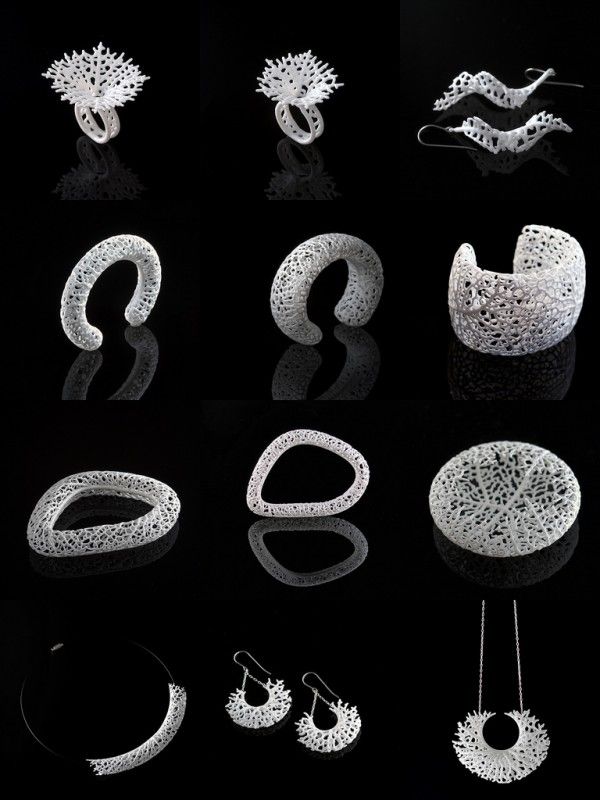 The printer is an open material system and is compatible with a great variety of proprietary and third-party metal powders, some of them being suitable for printing end-use jewelry pieces.
The printer is an open material system and is compatible with a great variety of proprietary and third-party metal powders, some of them being suitable for printing end-use jewelry pieces.
Pros
- Industrial-grade print quality
- High print speed
- Sizable build volume
- Open material system
- User-friendly operation
BLT-S210
The BLT-S210 is an SLM 3D printer capable of printing with a large number of metal alloys, including Titanium, Aluminum, Cobalt Chromium, Stainless Steel, Copper, and a lot more. The 500W laser and F-Theta optical system ensure high-quality metal parts with excellent mechanical properties and repeatability. The compact build area of 105 x 105 x 200 mm is perfect for batch-manufacturing of small jewelry items or for printing larger parts. Operation and maintenance of the device are easy and convenient due to the modular design of the S210. The printer is an open-parameter system, so the user is able to edit 294 parameters to precisely adjust the printing process and get the best result possible.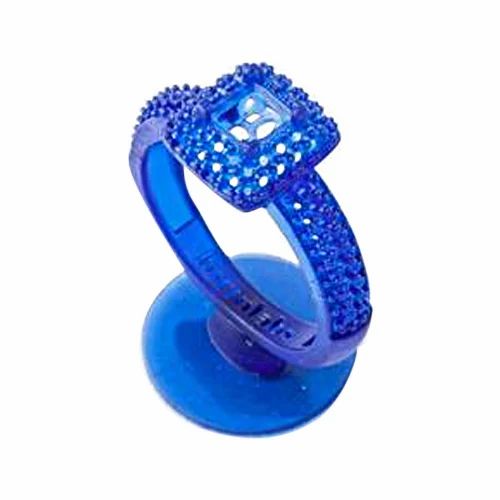
Pros
- 15 microns minimum layer height
- High-quality prints with great repeatability
- Wide material compatibility
- Intelligent software
Cons
- Needs a lot of installation space
Bottom line
The use of additive manufacture technologies in jewelry has given a boost to the industry development and set up new standards in jewelry design. The possibility to print objects of extremely complex geometries and ultimate customization options open unlimited opportunities for the designers and provide the customers with absolutely new fascinating jewelry pieces.
8 Best 3D Printers For Jewelry 2023 (Wax & Resin, and Every Price Range)
3D printing jewelry rarely means 3D printing actual wearable pieces made from filament or resin, but instead using a jewelry 3D printer to create high-resolution wax models of the eventual gold or platinum design, used to create a mold that is burned out and cast via investment casting or lost wax casting.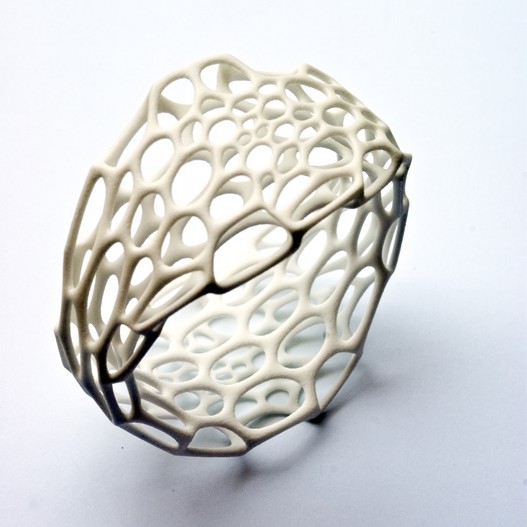
And, rather than having to pay $25+ for someone to 3D print it for you, buying your own wax 3D printer for jewelry saves you serious money (can cost $1-2 to print your own) — and gives you more control over your production.
So, we put together our list of the best wax 3D printers for jewelry, including resin and wax printers, and in every price range, to help you pick the best jewelry printer for you.
4.3
$699.99
Large Volume Pick
4.7
$959.99
Amazon here
Extremely High Resolution 3D Printer
4.4
| Name | Build volume (mm) | Price | Where to buy |
|---|---|---|---|
| Elegoo Mars 2 Pro | 129 x 80 x 160 | $250 | Elegoo here |
| Phrozen Sonic Mini 8K | 165 x 72 x 180 | $699 | Phrozen here |
| Anycubic Photon M3 Plus | 245 x 197 x 122 | $699 | Anycubic here |
| Anycubic Photon M3 Max | 300 x 298 x 164 | $1,049 | Anycubic here |
| Peopoly Phenom | 276 x 155 x 400 | $1,999 | Matterhackers here |
| Formlabs Form 3 | 145 x 145 x 185 | $3,499 | Dynamism Store here |
| Solidscape S325 | 6″ x 6″ x 4″ | Quote | Get a quote |
| Flashforge WaxJet 300 | 289 x 218 x 150 | ~$50,000 | Get a quote |
| EnvisionTEC D4K Jewelry | 148 x 83 x 110 | Quote | Get a quote |
Resin 3D printers are considered the best 3D printers for jewelry.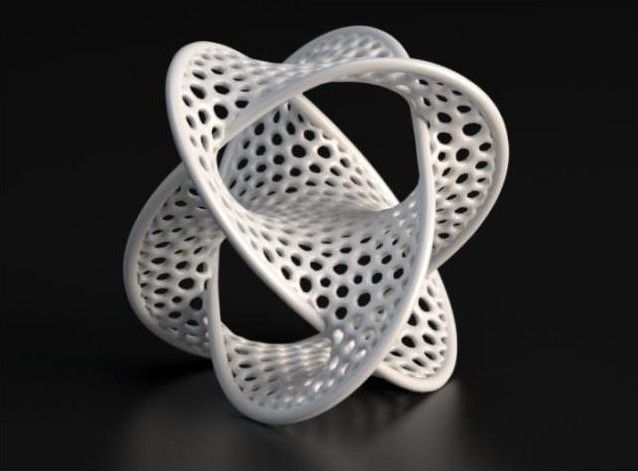 They use specialized castable wax resins, which rather than going from solid to liquid when heated, transition directly into a gas from their solid state.
They use specialized castable wax resins, which rather than going from solid to liquid when heated, transition directly into a gas from their solid state.
FDM 3D printers are very rarely used as 3D printers for jewelry. They are not capable of the same resolutions, crisp surface finishes or accuracies required for intricate and delicate jewelry pieces. Jewelry is incredibly highly detailed — an inaccurate mold will create inaccurate and unimpressive jewelry.
Additionally, the better the jewelry 3D printer quality, the less finishing the resulting jewelry piece will need to perfect it.
What do jewelry 3D printers make?Usually they 3D print wax jewelry molds, for example ring designs before any stones are set, or individual chain links.
However, they can also be used to create like-for-like “fitting pieces” for testing the fit of an as-yet unmade ring for a client’s finger. Though making the final ring would be expensive and take time, an exact replica can be made on a jewelry 3D printer in just minutes to test the sizing.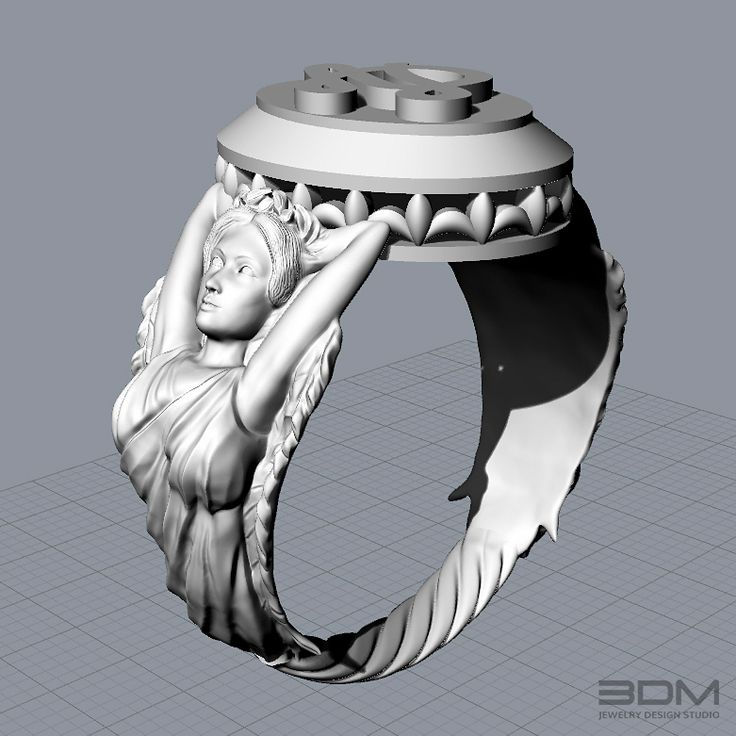
This saves the trouble of creating a piece just to find it doesn’t fit properly. Whereas for jewelry molds specialized castable resins are required, for these fitting pieces standard resins can be used.
3DSourced is reader-supported. When you buy through links on our site, we may earn an affiliate commission. Learn more
The Best 3D Printers for Jewelry
Elegoo Mars 2 Pro: Cheapest jewelry 3D printer
- Jewelry 3D printer price: $250 — Available at Elegoo store here / Available on Amazon here
- Build volume: 129 x 80 x 160 mm
Pros
Great value for great resolution.
Works at quick speeds.
Cons
Newer and high-spec models are available.
Featuring a 6-inch monochrome LCD screen offering HD 2K resolution, the Elegoo Mars 2 Pro offers precise jewelry printing for the price. Rather than DLP or SLA, the Mars 2 Pro uses LCD printing to cure entire resin layers at once, quickening print speeds and able to print at 30-50mm/h.
Other 3D printers for jewelry on this list offer better quality, but for the price the Mars 2 Pro is a great option. It is sturdily built with its CNC-machined aluminum structure for better stability, and the mono LCD is upgraded for improved lifespan to save you money over the long term. It’s one of the best 3D printers for jewelry under $500.
This is the detail we achieved when using the Elegoo Mars 2 pro – enough for fine jewelry pieces.The Elegoo Mars has Z-axis resolutions of up to 0.00125mm, XY-resolutions of 0.05mm, and weighs 6.2kg. It also supports 12 different languages, so if you’re not a native English speaker you can choose your own language.
The video below even shows, from start to finish, how accurately you can make wax models for gold jewelry using a standard Elegoo Mars. Even this standard version produces good quality wax models, and the Elegoo Mars 2 Pro comes with several upgrades on the original.
However, new and better Elegoo printers have since come out, which can create even more precise and intricate jewelry features. If you have the budget, consider upgrading to the Elegoo Mars 3 or Mars 3 Pro for the best resolutions.
If you have the budget, consider upgrading to the Elegoo Mars 3 or Mars 3 Pro for the best resolutions.
Elegoo Store here
Amazon here
We earn a commission if you make a purchase, at no additional cost to you.
Phrozen Sonic Mini 8K: Extremely high-quality 3D printer for casting
- Price: Check latest price at Phrozen here
- Build Volume: 165 x 72 x 180 mm
- XY Resolution: 22 Microns
- LCD Size: 7.1”
- LCD Resolution: 8K
- Material Compatibility: Resin
Pros
Unmatched resolution.
Ultra-stable dual linear rails ensure great stability.
User-friendly operation.
Cons
Small build volume for the price.
The Phrozen Sonic Mini 8K is the latest entry to Phrozen’s well-respected line-up of resin 3D printers. Setting it apart from the rest of the Phrozen stable and many other manufacturers is an 8K LCD (7500 x 3240 px) combined with an XY resolution of 22 microns, positioning it as one of the most detailed consumer-grade printers around.
The machine effectively doubles the 4K resolution found on most printers released in the last year or two, offering unparalleled results to satisfy even the most demanding jewelry makers and designers.
This allows you to create feature-rich, highly detailed, intricate parts and models with superb surface finish. For jewelry making, the Sonic Mini 8K can print extremely intricate resin molds for rings, broaches, bracelets, earrings, and much more.
The quality is largely unsurpassed in this price range, and the Phrozen Sonic Mini 8K should be at the top of the list of anyone serious about using 3D printing to create market-ready, production-grade jewelry casts from the first print onwards.
Further enhancing the Phrozen Sonic Mini 8K’s printing abilities is an ultra-stable dual linear rails setup, which ensures superb stability, mitigating print errors, alongside a frosted, laser-cut build plate that promotes fantastic adhesion, even on small parts and models like jewelry.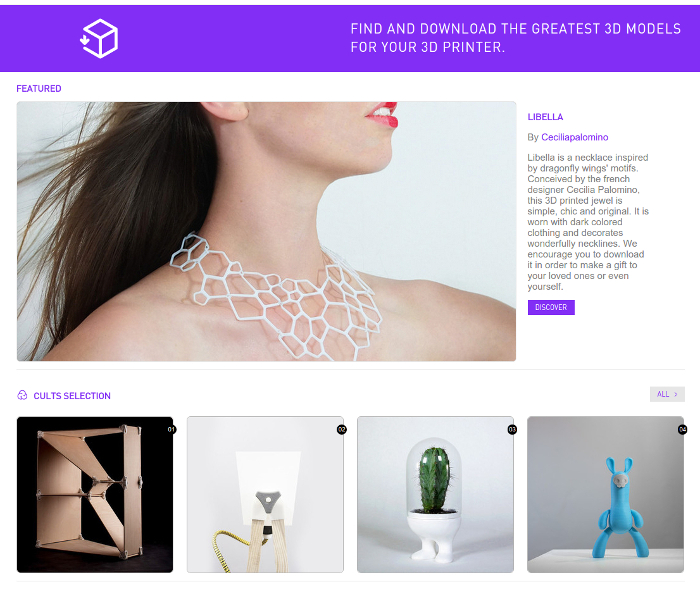
Finally, the light array is what Phrozen calls a linear projection LED module. Cutting through the jargon, this simply means excellent light uniformity for sharper, more consistent results.
The 165 x 72 x 180 mm build volume is large enough to batch print several casts at once, though it may be a little small for larger businesses. However, it makes up for this with user-friendly operation, and, again, a level of quality unheard of even a few years ago.
We recommend pairing the Phrozen Sonic Mini 8K with Phrozen’s own castable resin, notably the Phrozen Castable Resin W40, Phrozen Castable Resin W20, Phrozen Castable Dental & Jewelry Resin. The printer is compatible with third-party castable resins, but the quality does take a small hit, so it’s best to stick with Phrozen’s optimized resins for the best results.
Phrozen here
We earn a commission if you make a purchase, at no additional cost to you.
Anycubic Photon M3 Plus/Max
- Price: $700-$1,000 — Check latest price at Anycubic here / Amazon here
- Build Volume: 245 x 197 x 122 mm / 300 x 298 x 164 mm
- XY Resolution: 34 Microns / 46 Microns
- LCD Size: 9.
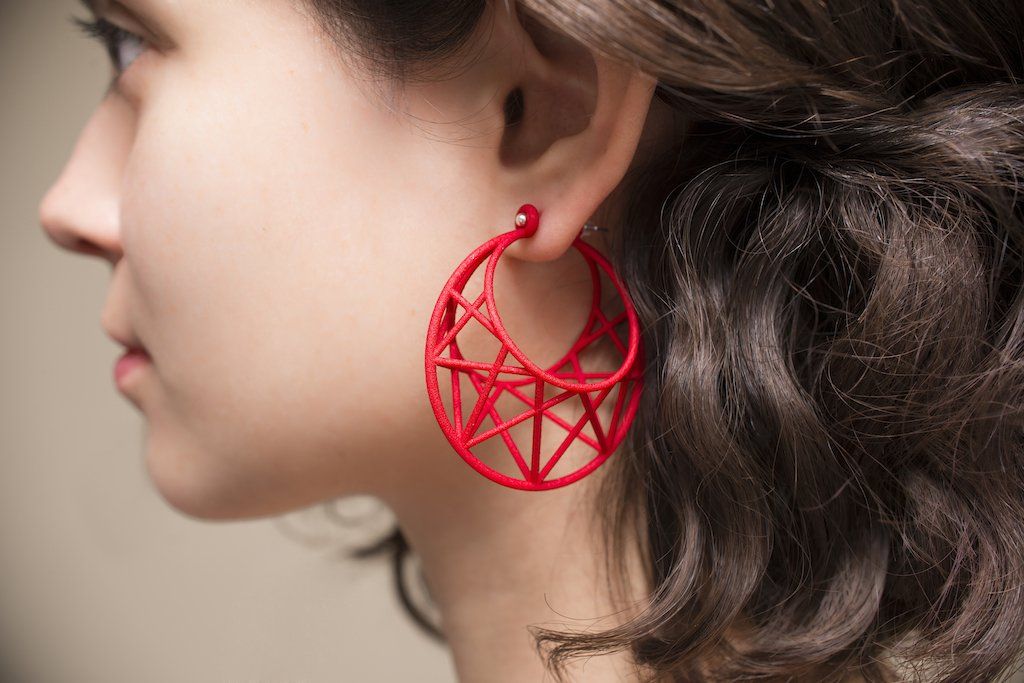 25″ / 13.6″
25″ / 13.6″ - LCD Resolution: 6K / 7K
- Material Compatibility: Resin
Pros
Large build volume.
Textured build plate offering superb print adhesion.
Fine details and features suitable for jewelry making.
Cons
The fans are very noisy.
With a 6K and 7K LCD resolution and 34 and 46 micron XY resolution respectively, the Anycubic Photon M3 Plus and Max produce high-quality prints stacked with fine details and features suitable for jewelry making.
However, the real benefit here is the large resin build volume compared to many similarly specced and priced 3D resin printers.
The Anycubic Photon M3 Plus boasts a 245 x 197 x 122 mm, while the Anycubic Photon M3 Max expands this to 300 x 298 x 164 mm – some of the largest in the budget resin market.
What this means for jewelry making, given that resin printers cure entire layers at once, is higher productivity: you can produce more jewelry at once, which is ideal for budding businesses looking for a cost-effective printer to kickstart a jewelry-making venture.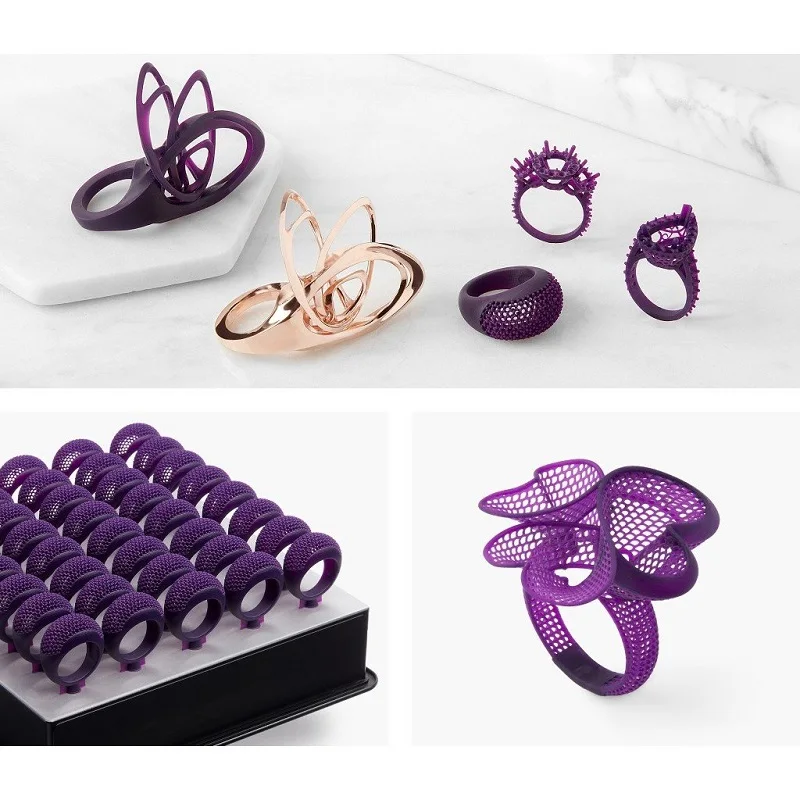
Both printers also come with several quality-of-life features that make these very easy to use and master. These include smart resin filing, a laser engraved build platform for superb adhesion, high-precision ball screw z-axis rails, and up to 60-100 mm/h print speeds, so you can prototype quickly and efficiently before committing to a production run.
Though the Anycubic M3 Plus and Max pair well with third-party filament, they work best with Anycubic DLP Craftsman Resin. It’s optimized for precise prints with intricate features, and a perfect resin for jewelry prototyping. It has the added benefit of reducing shrinkage, and has a shorter exposure time to cure than most other resins.
Large Volume Pick
Anycubic here
Amazon here
We earn a commission if you make a purchase, at no additional cost to you.
Peopoly Phenom: large-scale resin printer for batch printing jewelry molds
- Jewelry 3D printer price: $1,999 — Available on Matterhackers here
- Build volume: 276 x 155 x 400 mm
Pros
Large work area for the price.
Super fast bulk printing.
Cons
Loud fans.
The Peopoly Phenom offers truly enormous printing volumes, almost unheard of for a jewelry 3D printer. For jewelers looking to produce many rings or other pieces simultaneously, this larger volume provides space for dozens of wax jewelry models. If you’re in demand for jewelry and want to make as many as possible then this larger build volume is crucial.
With its 4K high resolution projection quality using MSLA technologies, the Phenom produces crisp, accurate and consistent jewelry molds. MSLA takes elements from both LED and LCD technologies, the result being fast, accurate and repeatable jewelry 3D printing.
- The even larger version, the Peopoly Phenom L, is available here.
- For faster print speeds, the premium Peopoly Noir is available here.
The Phenom uses Chitubox resin 3D slicer, useful if you’ve previously used it previously on another printer. Overall, it’s one of the best 3D printers for jewelry, and a great choice for people looking to make large numbers of castable wax jewelry models.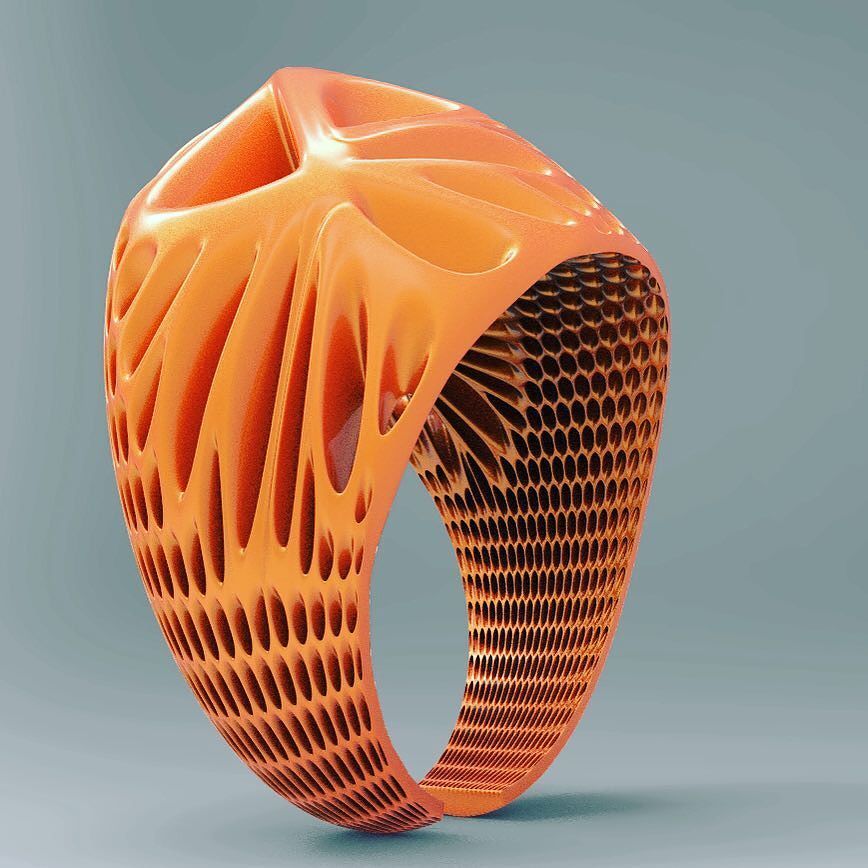
Formlabs Form 3
- 3D for jewelry price: $3,499 — Available on Dynamism here
- Build volume: 145 x 145 x 185 mm
Pros
Extremely fine details and precision, ideal for jewelry.
The gold standard for professional resin printing.
Cons
Small build area.
Seen as the gold-standard in professional resin printing, the Form 3 is capable of fantastic precision, with its new custom Light Processing Unit (LPU) using lenses and mirrors to accurately print jewelry models.
For the price, the Form 3 offers 25-micron resolutions and very consistent and repeatable printing. For those looking for a 3D printer for jewelry able to produce the same design flawlessly again and again, or for producing custom intricate designs, the Form 3 can handle both without issue.
Formlabs make their own castable wax resins designed for jewelry with “crisp settings, sharp prongs and smooth shanks. ” Within the Formlabs workflow therefore is a complete jewelry production process for wax models, though the Form 3 also excels as a dental 3D printer and in other industries, too.
” Within the Formlabs workflow therefore is a complete jewelry production process for wax models, though the Form 3 also excels as a dental 3D printer and in other industries, too.
Extremely High Resolution 3D Printer
Dynamism here
We earn a commission if you make a purchase, at no additional cost to you.
Solidscape S325: best 3D wax printer for jewelry
- Price: Requires a quote
- Build volume: 6” x 6” x 4”
Pros
Designed especially for jewelry making.
Accurate and precise.
Cons
No support for Mac users.
Soliscape make specially designed jewelry 3D printers, so any Solidscape printer you buy is optimized for jewelry printing. Whereas other printers like the Form 3 are designed to excel in a number of industries, the Solidscape S325 is designed with jewelry wholly in mind.
The S325 is the cheapest of Solidscape’s jewelry 3D printer range. It offers great accuracy, material jetting wax models for the precise and effective investment casting of precious metals. Solidscape stress that all their models are castable in gold and platinum, and do not expand or shrink during the investment casting process.
Solidscape stress that all their models are castable in gold and platinum, and do not expand or shrink during the investment casting process.
The S325 is capable of 0.001-inch layer thicknesses, with accuracies of 0.005 inches. Overall, as a specialized 3D printer for jewelry, Solidscape have a rich history in jewelry 3D printing and can be trusted to deliver high-quality and precise ring wax models, time and time again.
Flashforge WaxJet 400
- Price: ~$50,000
- Build Volume: 289 x 218 x 150 mm
- Layer Thickness: 16 Microns
- Resolution: 1200 x 1200 x 1600 dpi
- Material Compatibility: Flashforge casting wax and dissolvable wax support material
Pros
Great for mass production with great quality.
fast print speeds.
Cons
Not particularly large.
Unlike most of the other printers on our list, the Flashforge WaxJet 400 is aimed at established businesses for mass production with flawless quality. It employs multi-jet 3D printing technology instead of SLA, vastly improving production speeds, saving time and money, and shortening the time to market.
It employs multi-jet 3D printing technology instead of SLA, vastly improving production speeds, saving time and money, and shortening the time to market.
The machine produces casting wax patterns, not the final end-product jewelry. These casts are used for the final casting process, usually in metals, followed by polishing, stone setting, and sandblasting.
Though the 289 x 218 x 150 mm build volume isn’t particularly large, the printer is designed to work tirelessly at faster print speeds, improving productivity, with the printer able to churn out hundreds of models per day.
As Flashforge notes, the printer can produce up to 10kg of wax patterns in a single month. This is all done at an astounding 16-micron minimum layer height, beating the quality found on SLA resin printers, with high precision, high accuracy, and high detail results.
Due to the use of multi-jet technology, the Flashforge WaxJet 400 is limited to Flashforge materials. But rather than a constraint, these are optimized to make the most of the device’s capabilities.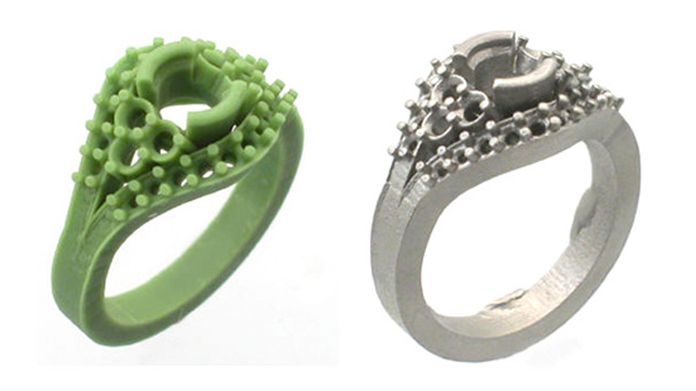
These include FFWJ1100 and FFWJ1200, both wax-based casting materials, and FFMS3100, a wax-based support material that dissolves easily after the printing process to simplify post-processing, allowing for steep overhangs and clean bridges, even on the smallest rings.
EnvisionTEC D4K Pro Jewelry 3D printer
- Jewelry 3D printer price: Requires a quote
- Build volume: 148 x 83 x 110 mm
Pros
High-resolution professional-grade desktop 3D printer.
User friendly.
Produces very detailed parts.
Cons
Small build volume.
Described by EnvisionTEC are the highest resolution professional-grade desktop 3D printer, as well as claiming to have the fastest speed, the D4K is well suited to jewelry 3D printing. Speed and accuracy are key to jewelry production, with the printer’s 4K UV DLP projector able to create crisp wax models at speed to be cast into stunning jewelry pieces.
EnvisionTEC are the originators of DLP 3D printing, having pioneered the process more than a decade ago. Now, their advanced D4K Pro can produce accuracies of up to 25 microns in the XY resolution, and 1 micron on the Z axis.
Now, their advanced D4K Pro can produce accuracies of up to 25 microns in the XY resolution, and 1 micron on the Z axis.
The jewelry 3D printer works well with EnvisionTEC’s WIC100 Series wax material, used to then burn out and investment cast precious jewelry. Though it’s an industrial 3D printer costing over $10,000, larger jewelers will find the D4K one of the best 3D jewelry mold printers.
Buying Guide – Things to Consider When Buying a 3D Printer for Making Jewelry
Resolution
Resolution measures the level of detail a 3D printer can produce, hugely important for jewelry production. A higher resolution 3D printer can produce more accurate models, finer details, better surface quality, and more intricate details – all essential where the final aesthetic quality is so important.
In terms of the casting process, higher accuracy models ensure few issues and errors during the casting process, saving costs on instanced prototyping and batch production for the market.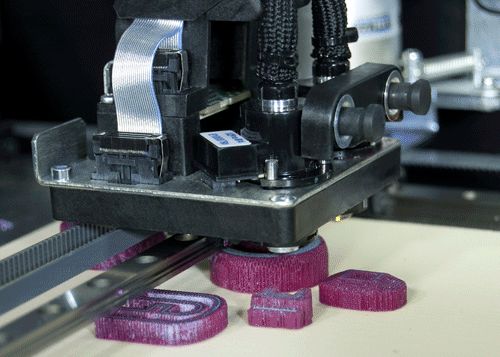
On an SLA resin printer, we would recommend at least a 6K resolution LCD, ideally 8K, while on a multi-jet printer, anything below 20 microns provides sufficient detail for high-quality casts.
Build Volume and Print Speed
A larger build volume allows for larger individual parts, though this particular usecase doesn’t matter in jewelry making, where parts are small.
However, for batch printing jewelry casts, it’s absolutely key. Larger build areas let jewelry businesses print multiple models at once, an important consideration if your plans include large and frequent production runs.
Resin printers cure entire layers at once, so whether you are printing one model or a dozen, the print times are the same. So, you can print faster because you can squeeze more models into a larger build surface without upping the production time.
Cost
For a decent 3D printer for jewelry making, you can expect to pay upwards of $700, with prices surging to well over $50,000 for professional-grade machines.
As the saying goes, you get what you pay for, so if you are comfortable with a smaller-scale operation (and slightly less precise models), a more affordable printer is a viable choice.
Otherwise, we strongly recommend considering a more professional 3D printer, because more expensive machines offer better overall print speeds, build volumes, workflows, and, therefore, better productivity.
Resin Compatibility
Always check whether a 3D printer is compatible with third-party materials, or tied to the manufacturer’s materials, before locking in your choice.
Most importantly, check it’s compatible with castable resins or wax suitable for jewelry. Not all are (especially cheaper resin printers), which could result in an expensive mistake.
Note that castable resin tends to be more expensive than typical 3D printing resin. But due to the size of the models produced in jewelry making, models are fairly cheap to print.
The Jewelry 3D Printing Process- CAD File: Either design your own jewelry piece on CAD software, pay someone to design your desired piece, or pay for an existing jewelry STL file online and download it.

- Slice & Prepare: If not already an STL or other compatible file, export it as one. Then import it into your 3D slicer and slice it for printing.
- Print the model: Use a castable wax resin designed for jewelry model 3D printing.
- Molding: Pour your molding material over your wax jewelry model, and leave it to harden.
- Melt the wax: Heat your new mold so that the original wax model melts and evaporates, leaving a hollow empty space inside with the exact dimensions of your planned jewelry piece.
- Casting: Pour melted liquid metal e.g. gold, silver or platinum into the mold to cast it.
Can a 3D Printer Print Jewelry?
Yes, you can 3D print jewelry with a 3D printer using lost wax casting. The printer produced what is called a wax or castable resin pattern – a 3D model of the desired jewelry produced using a material that can melt away easily.
The pattern is then covered and surrounded in plaster.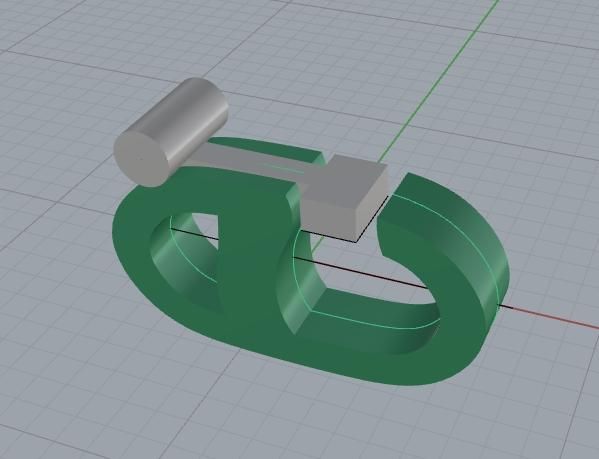 The block of plaster is then gently warmed to melt the wax/resin inside, creating a gap that matches the shape, size, and details of the jewelry.
The block of plaster is then gently warmed to melt the wax/resin inside, creating a gap that matches the shape, size, and details of the jewelry.
The space is filled with melted metal like silver or gold. As the metal cools, it takes on the shape of the pattern, resulting in a finished piece of jewelry.
Can You Use 3D Printer Resin for Jewelry?
Yes, you can use 3D printer resin to produce jewelry, but only with more expensive castable resins, which are designed specifically for lost wax casting.
These differ from standard resin in that they are designed to melt away when heated up, much like wax, the material of choice for traditional jewelry casting. The idea here is that they are used to create plaster molds, melted, then replaced by molten metals to create jewelry.
What 3D Printers Do Jewelers Use?
Jewelers use 3D printers designed to print with castable resin, wax, or castable wax because these machines can print “patterns” – casts that are used in the lost wax casting process to create burnable molds.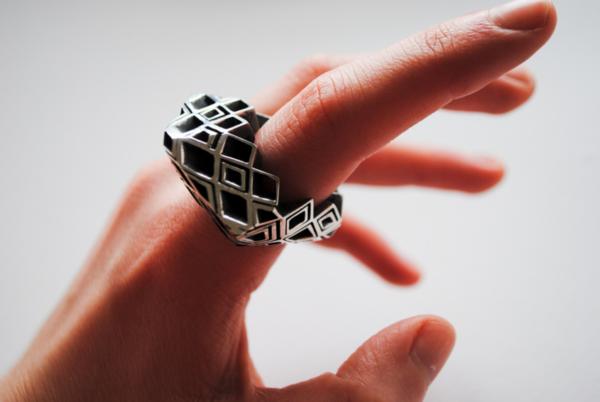
When these molds are encased in plaster and then burnt away, liquid molten metal is poured in to create the final jewelry pieces.
How Much Is a Jewelry 3D Printer?
Jewelry 3D printers range from entry-level, consumer-grade machines from $700 to $1000, such as the Phrozen Sonic Mini 8K and Anycubic Photon M3, all the way to industrial, professional-grade 3D printers costing tens of thousands of dollars, such as the Flashforge WaxJet 400.
How Much Does It Cost to 3D Print Jewelry
Assuming 1kg of castable resin costs $100, and a 2g average weight of a castable ring, you can print 500 of these rings with 1kg of resin. This calculates the average cost at $0.20 per jewelry print. However, this doesn’t factor in unused resin, failed prints, post-processing, etc.
Advantages of owning a jewelry 3D printer
- Saves money long term: rather than paying a 3D printing service $20+ to print your mold for you, you can print your own wax jewelry molds for just a dollar each for lost wax casting.
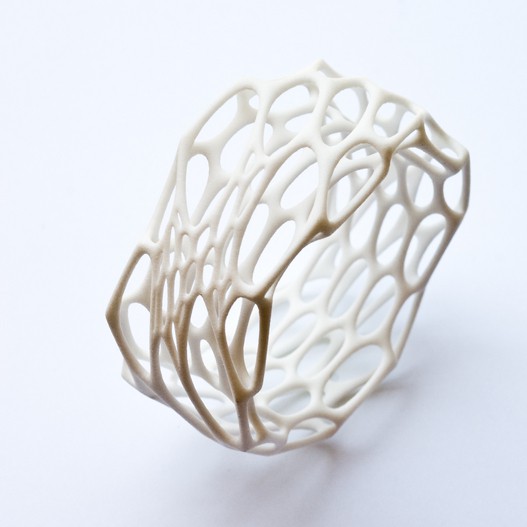
- Control your own jewelry production: with the ability to print jewelry in-house, you control your own workflow and apart from resin shortages, cannot be slowed down by supplier failures. Your order will always be top priority.
- Fast: going from CAD model to a piece ready to be investment cast is quick, especially when you can print and cast everything in one place.
- Very accurate: precise, smooth and intricate jewelry is not an issue for jewelry 3D printers, some able to print with below 10-micron accuracy to capture your ring’s most delicate and beautiful features.
- Repeatable and scalable: 3D printers for jewelry can create potentially dozens of identical or customized ring molds at once, perfect for scalable jewelry production.
Further on the saving you money point, this is a video showing how a low-cost Elegoo 3D printer can print accurate enough jewelry wax molds to then cast in gold:
FAQs
Can You Make Gold Jewelry With a 3D Printer?
Though you can’t print gold directly on a consumer-grade 3D printer (some professional printers can, but the process is complex and expensive), standard 3D printers can produce wax or castable resin models that are then used to create plaster molds.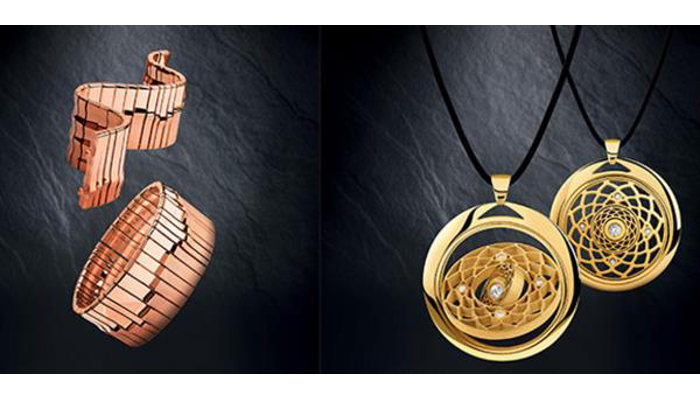
The wax is burnt out from the molds and replaced with molten gold to create gold jewelry. Though the process remains the same, it’s the creation of complex and bespoke molds that is now much easier thanks to 3D printing.
Can a 3D Printer Print Wax?
Yes, you can 3D print wax to create casts and molds to bring to lift complex and intricate parts during the casting process. But, nowadays, it’s more common to find hybrid materials like castable resin, which are a little more durable and tougher than wax, but burn off during the casting process just as well.
Which 3D printer is best for Jewellery?
For the highest quality detail and features, the Phrozen Sonic Mini 8K is one of the best jewelry making 3D printers on the market today. For those looking to batch print larger quantities of jewelry, Anycubic’s M3 Plus and Max offer generously-sized build volumes while maintaining excellent detail and precision.
Related articles you may be interested in:
- Best CAD software for jewelry design
- 3D printed jewelry projects
- Best jewelry 3D scanners
- The best 3D printers for miniatures
Choice of technology and 3D printer for jewelry making, pros and cons
Currently, there are many new technologies that are designed to simplify production in various industries.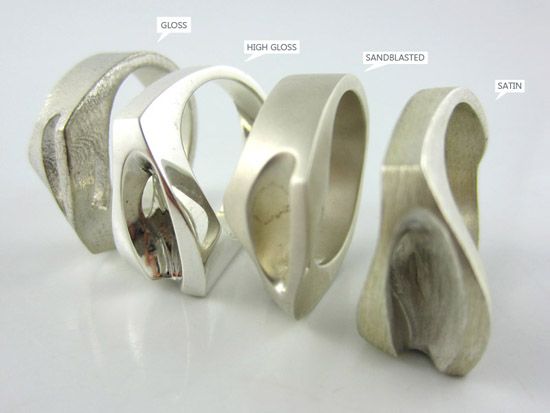 Progress does not stand still and, despite some opponents, 3D printing has its own niche in the production of jewelry.
Progress does not stand still and, despite some opponents, 3D printing has its own niche in the production of jewelry.
3D printing can speed up and reduce the cost of jewelry production due to the low cost of consumables. With 3D printers, jewelers have the ability to quickly change the design of a product and make prototypes at least several times a day. For many jewelry industries, 3D printing is becoming a good alternative or addition to milling machines and other equipment.
Until now, some believe that handmade is a sign of craftsmanship, especially when it comes to creative work, and models made using 3D modeling and printing are amateurish. But many people forget that behind the computer is the same person who not only mechanically presses the buttons, but also puts his soul into his creation.
Benefits of 3D printing
In order to understand how justified the use of a 3D printer is, you need to know how jewelry is made.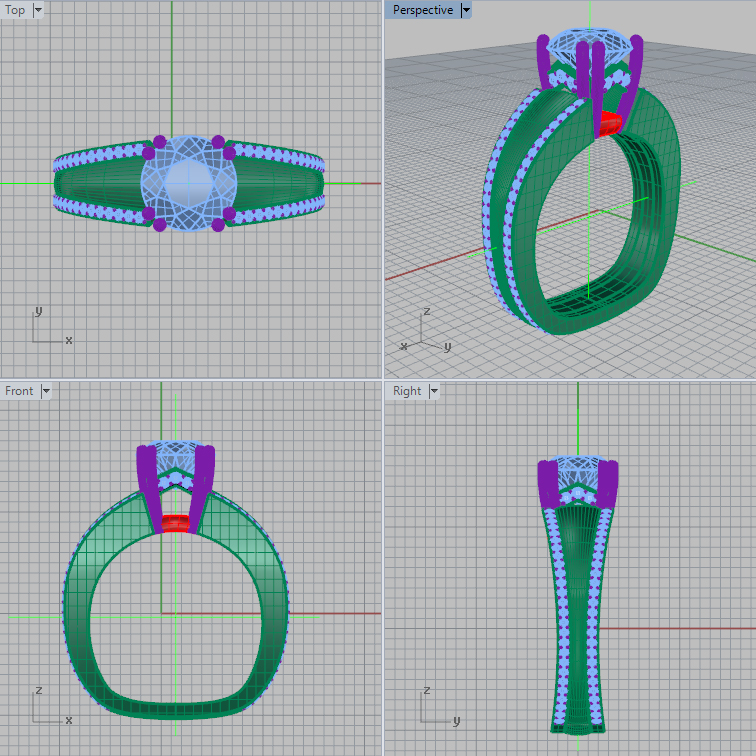 This is very painstaking work. No wonder the expression "jewelry work" appeared, denoting a very delicate and complex work.
This is very painstaking work. No wonder the expression "jewelry work" appeared, denoting a very delicate and complex work.
Any decoration begins with a sketch. Usually several sketches are made in order to accurately determine the design and location of the inserts. Not only stones are used as decor, it can be elements made of wood, bone, precious metals, it all depends on the designer's imagination.
At the next stage, the product is drawn in a 3D editor. This allows not only to visualize the future product, but also to correct some errors and inaccuracies made at the design stage.
Ring model
Some craftsmen still carve "stencils" by hand. Such work requires certain skills and perseverance. Usually this is how products are made that will be cast in a single copy.
A finished 3D model can have several ways to be implemented in a physical version - this is milling or 3D printing.
Stencil milling
Currently, 3D printing is not much inferior in accuracy to a milling machine and often has a significant advantage in speed, despite the fact that after printing it is still necessary to separate the supports and clean up the points of contact with the model.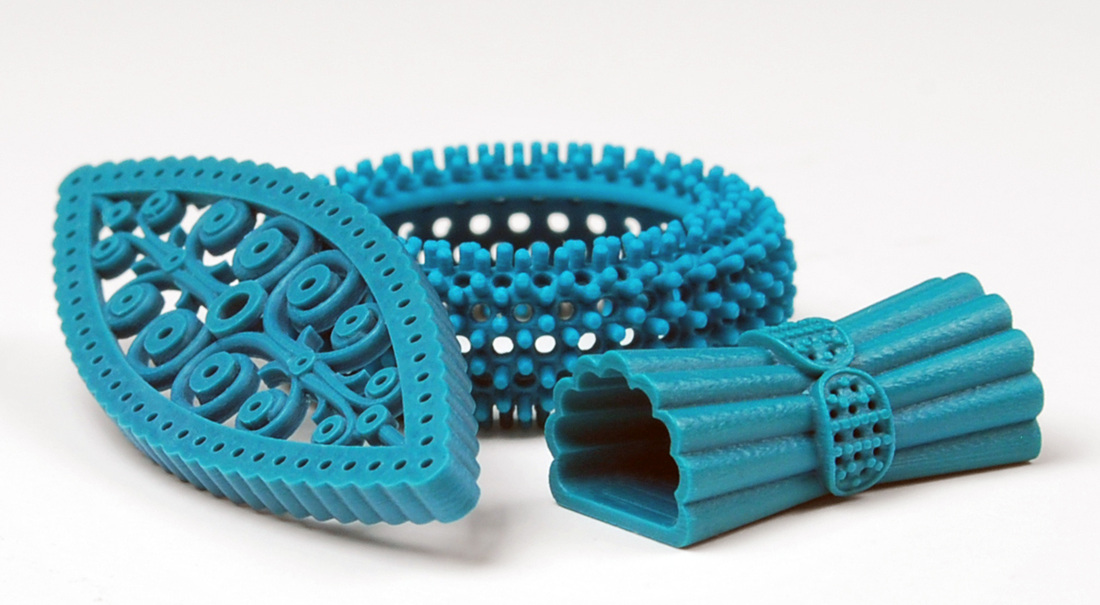 Once a physical model has been obtained, it can be cast immediately if the material used is wax or a burnable polymer.
Once a physical model has been obtained, it can be cast immediately if the material used is wax or a burnable polymer.
If it is necessary to cast a large batch of products, then a mold is made from the master model made with the help of special rubber for subsequent wax casting. There are many types of rubber that vary in hardness and curing temperature. Rubber is selected depending on the material from which the master model is made.
For pouring molds, a special machine is usually used - an injector. In some models, you can not only heat the wax, but also vacuum it or leave it under pressure. This helps to reduce the number and size of air bubbles for better pouring of the rubber mold.
In home workshops, silicone is used instead of special rubber. After all, a special machine is needed to vulcanize rubber. But rubber molds are too soft and short-lived for making a large batch of stencils.
After making the required number of stencils, they are collected in "Christmas trees".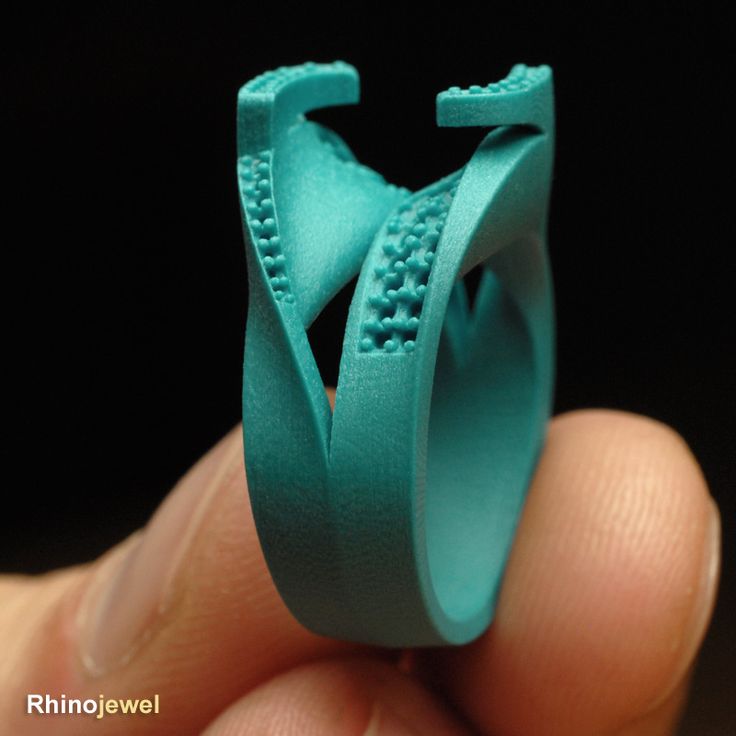 "Elks" are waxes soldered to a wax rod. To save space, the distance between them is very small and they resemble fluffy Christmas trees, hence the name. The finished Christmas tree is weighed to calculate the required amount of metal. In some places, stones are immediately inserted into the stencils, unless another mounting option is provided.
"Elks" are waxes soldered to a wax rod. To save space, the distance between them is very small and they resemble fluffy Christmas trees, hence the name. The finished Christmas tree is weighed to calculate the required amount of metal. In some places, stones are immediately inserted into the stencils, unless another mounting option is provided.
Stencil Christmas trees
Ready "Christmas trees" are placed in a special cylindrical "cassette" without a bottom, which is called a flask, and filled with a gypsum-based molding mass. The flask with uncured gypsum must be evacuated to get rid of unnecessary air bubbles that can lead to defects on the surface of the finished casting.
After hardening, the gypsum flask is sent to a muffle furnace to melt the wax.
The calcination mode is selected depending on the material of the wax. For wax or burnout polymer, different modes are needed in order for the material to be completely removed from the gypsum!!!!!!
When all the wax is melted, cavities are formed inside the gypsum, repeating the contours of the wax.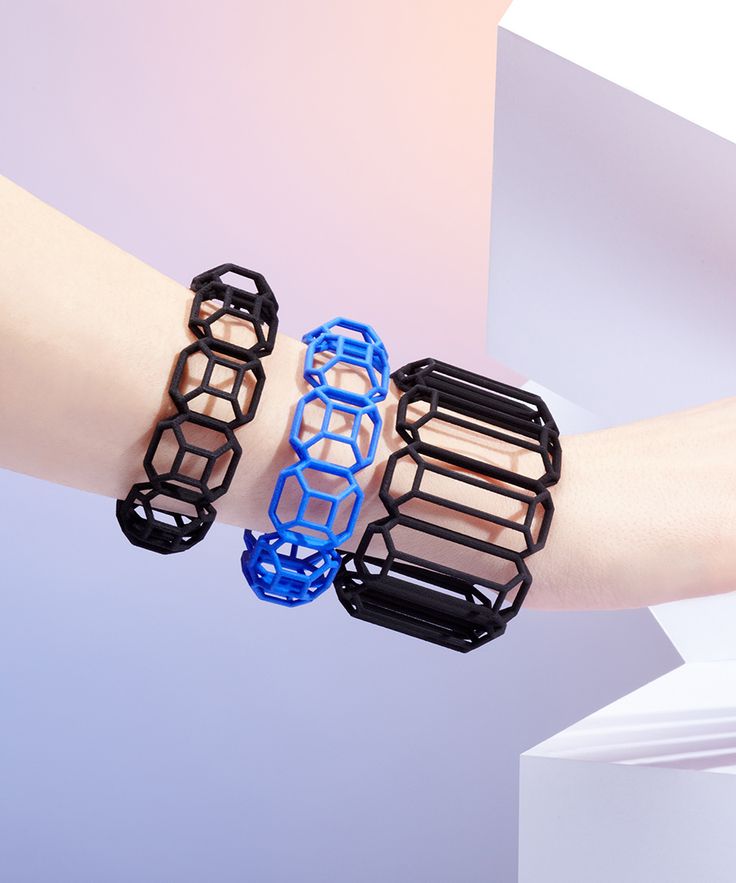 Metal is poured into these voids. After casting, the flask is cooled and the gypsum mold mass is washed out under the pressure of water. The result is a metal Christmas tree.
Metal is poured into these voids. After casting, the flask is cooled and the gypsum mold mass is washed out under the pressure of water. The result is a metal Christmas tree.
Herringbone after casting
Finished castings are cut from the Christmas tree and washed, polished, if necessary, blackened by the master until the desired appearance is achieved.
3D printers for jewelers
There are several 3D printing technologies that may be suitable for the needs of jewelers. Each has its pros and cons. Some 3D printers are ideal for a large workshop, and some are ideal for a small workshop.
SLA
SLA or stereolithography is based on the principle of layer-by-layer solidification of a photopolymer resin under the action of a UV beam. The UV beam is focused by means of mirrors on the surface of the resin and illuminates the model in layers.
How the SLA Printer Works
SLA 3D printers were the first to be noticed by jewelers. SLA devices are compact, while they have high printing accuracy.
SLA devices are compact, while they have high printing accuracy.
Pros and cons
pros
Minuses
Print examples
From prototype to finished product
Cast and printed ring
Rating of printers.
Leadership among the production of SLA 3D printers is held by Formlabs.
Formlabs Form 3
Formlabs Form 3
Specifications:
XY resolution: 25 µm
Laser spot size: 85 µm
Laser power: One 250mW laser
Working area size: 14.5×14.5×18.5cm
Layer thickness: 25 – 300 µm
A professional 3D printer that is popular with professional jewelers and dentists.
Formlabs Form 3L
Formlabs Form 3L
Specifications:
XY resolution: 25 µm
Laser spot size: 85 µm
Laser power: One 250mW laser
Working area size: 33. 5×20×30cm
5×20×30cm
Layer thickness: 25 – 300 µm
Form 3L differs from younger models in its large print area, which allows you to produce truly large products without losing quality and accuracy.
DLP/LCD
DLP is very similar to SLA, only as a source of UV radiation, to illuminate the photopolymer resin, not a directed beam of light is used, but a DLP projector. DLP printers illuminate the entire work area at once, so they greatly outperform SLA in print speed.
How a DLP Printer Works
Today it is one of the most affordable photopolymer 3D printing technologies. In terms of cost, LCD printers have caught up with the price level of amateur FDM. DLP printers are much more expensive due to the use of an expensive projector as a UV source.
The projector is of course more expensive, but more durable, on the other hand, the LCD display is not so expensive and can be easily seen, unlike the projector.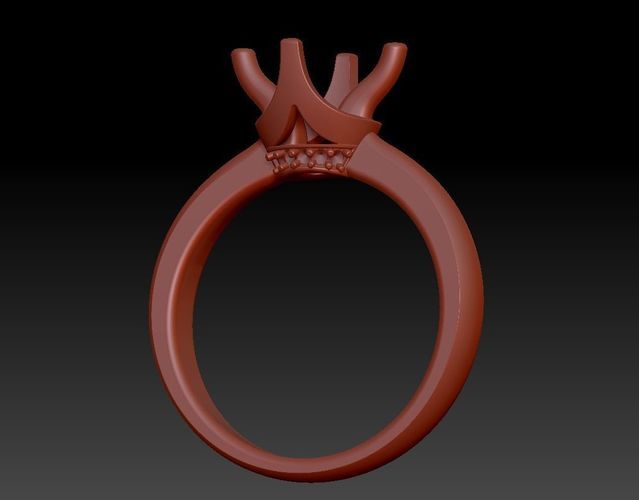 What to choose each user decides for himself.
What to choose each user decides for himself.
Pros and cons.
pros
Minuses
Print examples
Comparison between 3D printed master model and molded part
Burnout resin model and finished product
Demonstration of products cast with burnout resin
Rating of printers.
The print accuracy of LCD printers depends on the pixel size, so you should pay attention to this parameter when choosing a printer.
Anycubic Photon Mono
Anycubic Photon Mono
Specifications:
LCD display resolution: 2560x1620 (2K)
XY Positioning Accuracy: 0.051mm
UV wavelength: 405 nm
Working area size: 130x80x165 mm
Layer thickness: 0.01-0.15mm
The Anycubic Photon Mono is an inexpensive LCD machine ideal for hobby printing.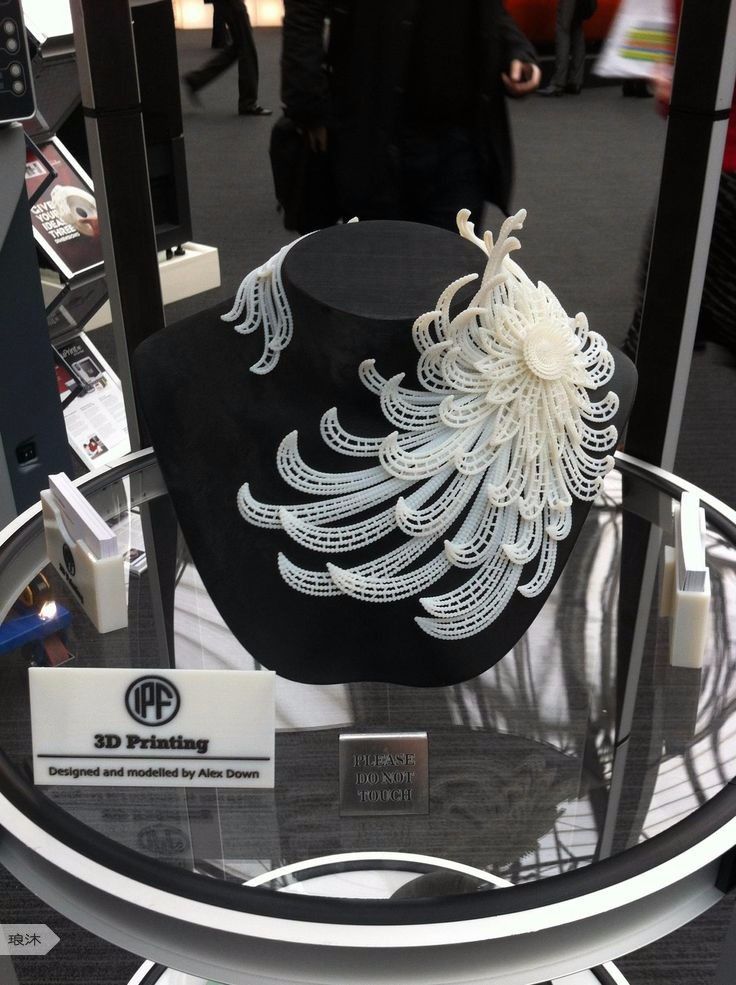 The monochrome display allows you to reduce the exposure time and speed up printing.
The monochrome display allows you to reduce the exposure time and speed up printing.
Phrozen Sonic 4K
Phrozen Sonic 4K
Specifications:
LCD resolution: 6.1" 4K Mono LCD
XY positioning accuracy: 35 microns
UV wavelength: 405 nm
Working area size: 134x75x200 mm
Layer thickness: 0.01-0.30mm
Phrozen Sonic 4K is specifically designed for use in the dental and jewelry industry. Despite its compact size, the printer is not inferior to professional machines in accuracy, and the exposure time of one layer is only a few seconds.
Phrozen Sonic Mighty 4K
Phrozen Sonic Mighty 4K
Specifications:
LCD resolution: 9.3" 4K Mono LCD
XY positioning accuracy: 52 microns
UV wavelength: 405 nm
Working area size: 200x125x220 mm
Layer thickness: 0.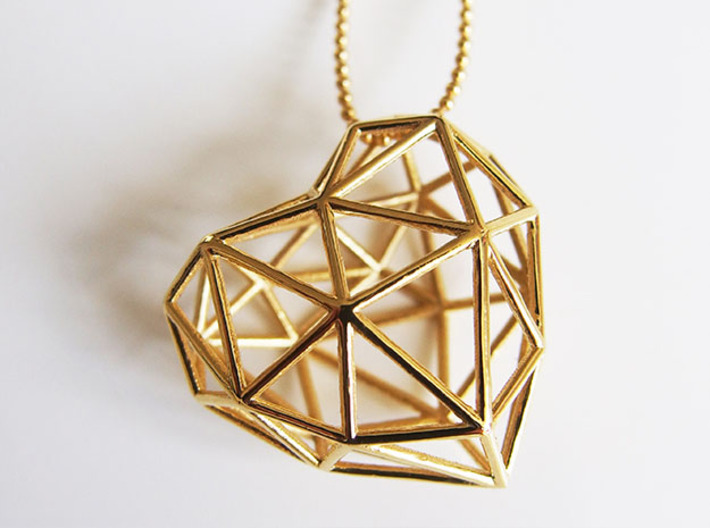 01-0.3mm
01-0.3mm
Phrozen Sonic Mighty 4K is a professional device with a large print area. This allows you to quickly produce small batches of models.
Phrozen Sonic XL 4K
Phrozen Sonic XL 4K
Specifications:
LCD resolution: 8.9" 4K Mono-LCD
XY positioning accuracy: 50 microns
UV wavelength: 405 nm
Working area size: 190x120x200 mm
Layer thickness: 0.01-0.3mm
The Phrozen Sonic XL 4K is a professional machine with a large print area and a high resolution monochrome LCD display. This allows you to quickly produce batches of products with high accuracy.
Peopoly Phenom XXL
Peopoly Phenom XXL
Specifications:
LCD display resolution: 3840x2160 (23.8", 16:9, UHD 4K)
XY positioning accuracy: 137 µm
UV wavelength: 405 nm
Working area size: 527x296x550 mm
Layer thickness: 0.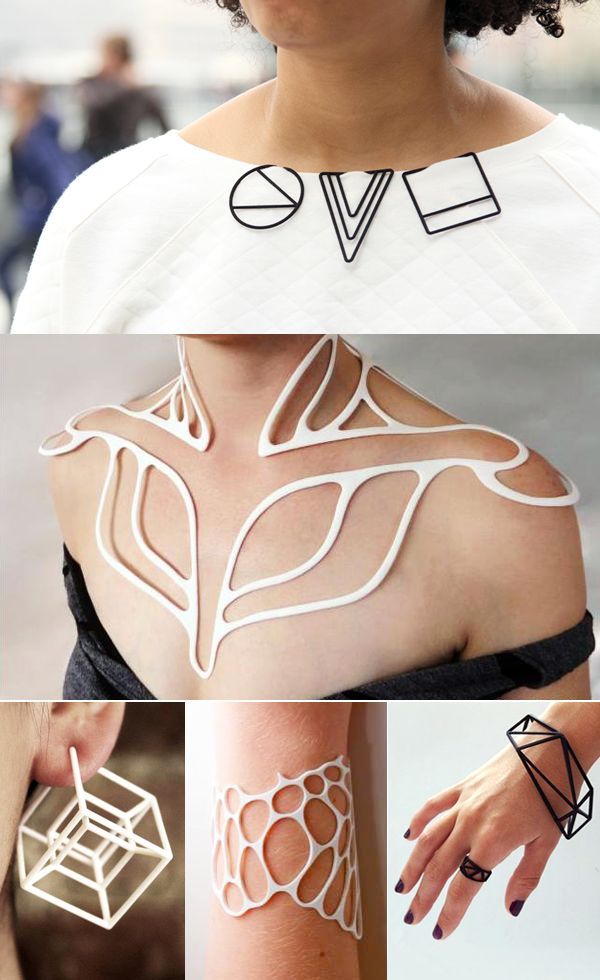 01-0.3mm
01-0.3mm
The Peopoly Phenom XXL is a device with a huge build area, which is ideal for serial production of not only jewelry.
Phrozen Sonic MEGA 8K
Phrozen Sonic MEGA 8K
Specifications:
LCD resolution: 15" 8K Mono LCD
XY Positioning Accuracy: 43 µm
UV wavelength: 405 nm
Working area size: 330 x 185 x 400 mm
Layer thickness: 0.01-0.3mm
This is the first LCD printer with 8k monochrome matrix resolution, and a huge working area allows you to produce large batches of products in one print.
MJM/MJP
MJM (or similar PolyJet technology) is a technology for layering photopolymer or wax through many fine nozzles. Typically, the print head is located from 96 to 448, depending on the printer model.
If a photopolymer is used as a material, it is immediately cured by a UV lamp, which is located on the printer's head.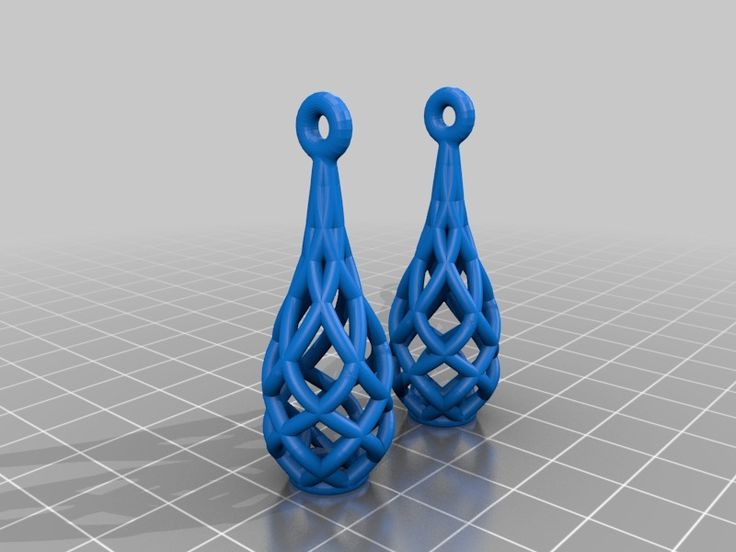
How the MJM printer works
In addition to photopolymer, MJM 3D printers can use wax as a material for printing.
MJM printers can print multiple materials at the same time. This allows you to print complex models with soluble or investment supports. This makes it possible to produce complex models with a smooth surface quickly and easily.
Pros and cons
pros
-
Ability to print multiple materials at the same time. This means that another, soluble material can be used as a support. This allows you to save a lot of time on removing the support from the finished model and cleaning up the places where the supports come into contact with the print.
Minuses
-
To install the printer, most likely, you will need a separate room. 3D printers based on MJM technology are quite bulky in their dimensions, this is not a device that can simply be placed on a desktop or nightstand.
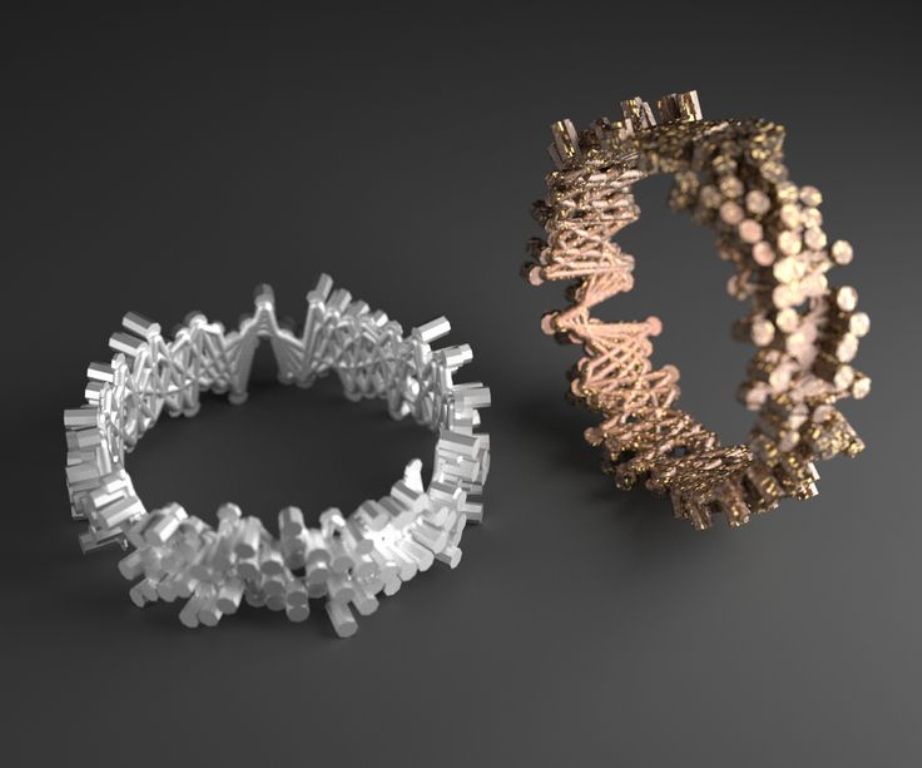
Print examples
Seal of a lot of stencils
Ring printed with wax
Master models made on MJM printer
Lot of jewelry stencils for further casting
Printer rating
FlashForge WaxJet 410
FlashForge WaxJet 410
Specifications:
Materials: Wax, support material.
Resolution: 1200*1200*1600
Building area size: 289*218*150mm
Layer thickness: 16 microns
Accuracy: ±0.04mm / 20mm
The FlashForge WaxJet 410 is an industrial machine designed for serial printing of wax models, which will then be cast from metal. Machines of this class can be useful not only in jewelry production, but also in the dental industry, aerospace, mechanical engineering, prototyping, etc.
Totals
Photopolymer 3D printers are no longer inferior in detail to professional milling machines. The main advantage of a 3D printer is the ability to produce models of complex geometry with many internal cavities that are physically impossible to produce on a router.
Large firms will appreciate the flexibility that allows them to quickly adapt to customer requirements, as well as quickly produce large and small batches of products due to the shortening of the production chain.
And for a small workshop, a small photopolymer printer with a can of burn-out resin can be a good help, eliminating the need to purchase some expensive machines.
Use of 3D printing in jewelry and foundries
Skip to Main Content
Formlabs' robust jewelry making ecosystem enables retailers and designers who create bespoke jewelry to large, high volume foundries to expand and grow their business.
Find Recommended Foundries
The smooth printing process, high precision and surface quality of the Form 3 take you from design to production.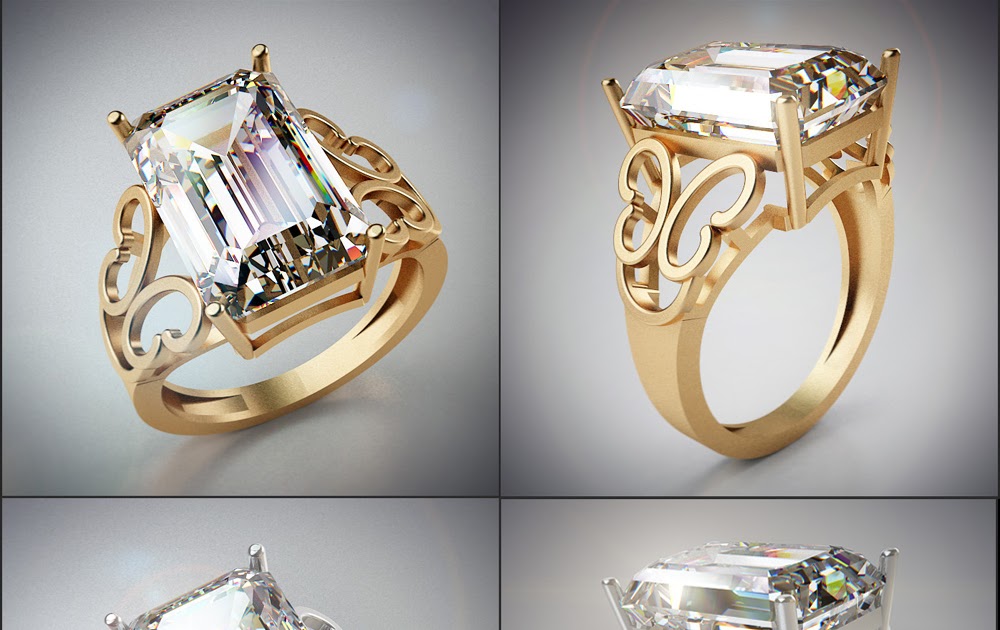 Whether it's 3D printing samples for customer fitting, casting models for custom jewelry, or creating reusable molds for jewelry, Formlabs has the right material for a variety of applications.
Whether it's 3D printing samples for customer fitting, casting models for custom jewelry, or creating reusable molds for jewelry, Formlabs has the right material for a variety of applications.
Learn more about Form 3View Jewelry Making Materials
Reduce manual labor by creating casting models in hours. The speed of the printing process, the accuracy and surface quality offered by Form 3 allows you to move from design directly to production. Our calibrated burn-in schedule guarantees clean burn-out and a smooth finish on every product.
Digital Model Design
3D-torture models
Preparation for casting
Production of form and burning of printed models
Files according to the model 9000 Polishing and finishing the surface of the jewelry 00 9000 9000 9000 9000 9000 , which "sit like a glove", and delight customers with the right recommendations. 3D printing rubber injection molding masters speeds up iterations and reduces costs. Use master patterns to create investment casting stencils. Standard resins are ideal for cold forming, while High Temp Resin resins withstand temperatures comparable to natural rubber vulcanization. Learn how to integrate 3D printing into your workflow. Download free white papers, watch webinars, and read our guides to using 3D printing technology in jewelry making. View Jeweler's Resources “Casting thicker pieces with resin has always been a challenge, whether it's inscription on the ring, models with large cross-sections, or general fixes for casting defects. Castable Wax 40 Resin has shown results that surprisingly match those of conventional injectable wax. Thanks to the high wax content, a more reliable sprue connection and the highest surface quality are ensured.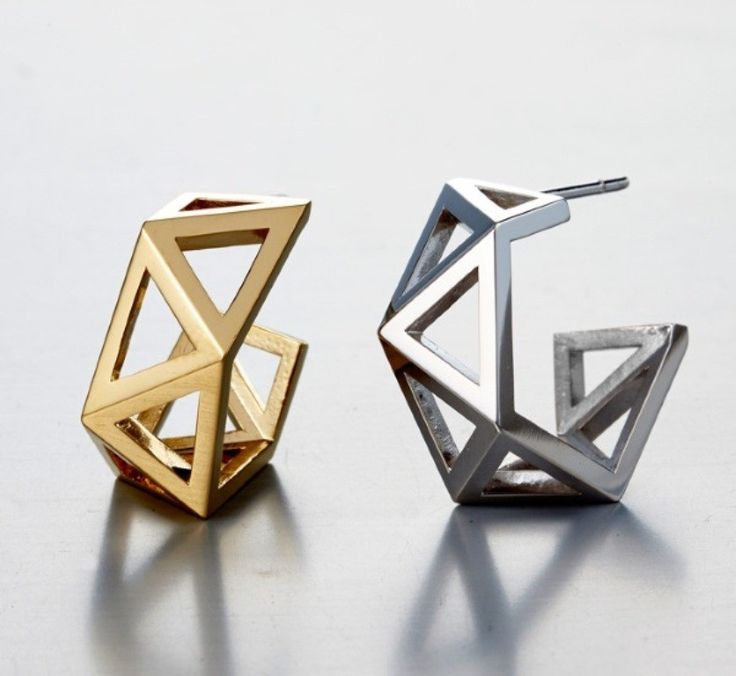 SLA-printed 3D models are more durable and economical than stencils. They can be reproduced or corrected with a few mouse clicks.
SLA-printed 3D models are more durable and economical than stencils. They can be reproduced or corrected with a few mouse clicks. 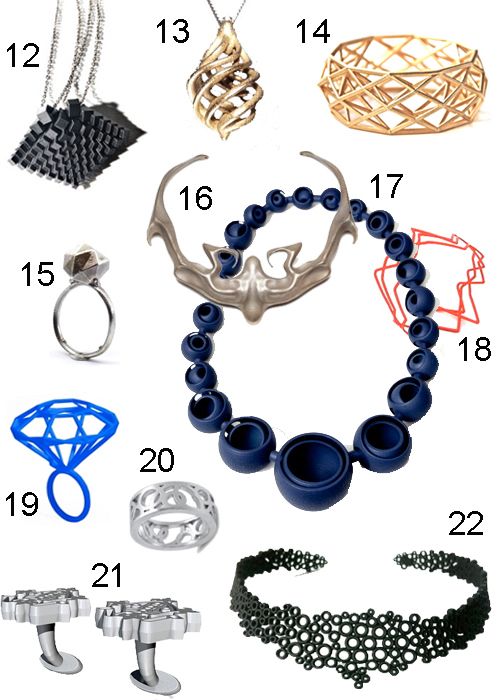
Learn more



